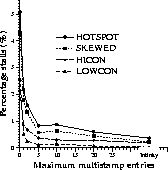
Figure 7: Tradeoff involved in sending background invalidation requests to reduce the stall rates
With local causality, we observed that 70-80% of stalls were _switching stalls_ that occurred the first time client uses a server it has not used in the recent past. Switches are frequent in our system since we select servers randomly for every transaction. In a real system, a client will use a server or a set of servers for some time before switching to a different server; thus switching will be relatively infrequent and stalls are likely to be smaller than what we observed.

Figure 7: Tradeoff involved in sending background invalidation requests to
reduce the stall rates
A good way to reduce switching stalls is to send invalidation requests in the background, for example, in parallel with a commit request. That way, the client will be up to date for all servers when the next transaction starts. However, since a client does not access non-preferred servers frequently, it may not be worthwhile sending installation requests to them. Figure 7 shows the results of this optimization (for 5-entry multistamps). Here ALL is the case in which invalidation requests are sent to all out-of-date servers at commit, and PREF is the case in which these requests are sent only to out-of-date preferred servers; NORMAL is the case where no background invalidation requests are sent. The ``Msgs'' column gives the total number of invalidation messages (both background and foreground) sent per transaction for each scheme. The main point to note here is that PREF works very well; only slightly more messages are sent (over NORMAL), yet the stall rate drops significantly.
The results for all multistamp sizes for PREF are given in Figure 8; we can see that the optimization reduces stall rate by approximately a factor of two (compared with Figure 4). This figure shows the true performance of our scheme. For all the stressful workloads, the stall rate is less than 1%; for the realistic workload, the stall rate is around 0.1%.
Note that a client can use heuristics based on its history of previous transactions to determine whether a server is preferred or non-preferred.

Figure 8: Percentage of fetch
stalls when messages are sent to preferred servers at end of
transaction